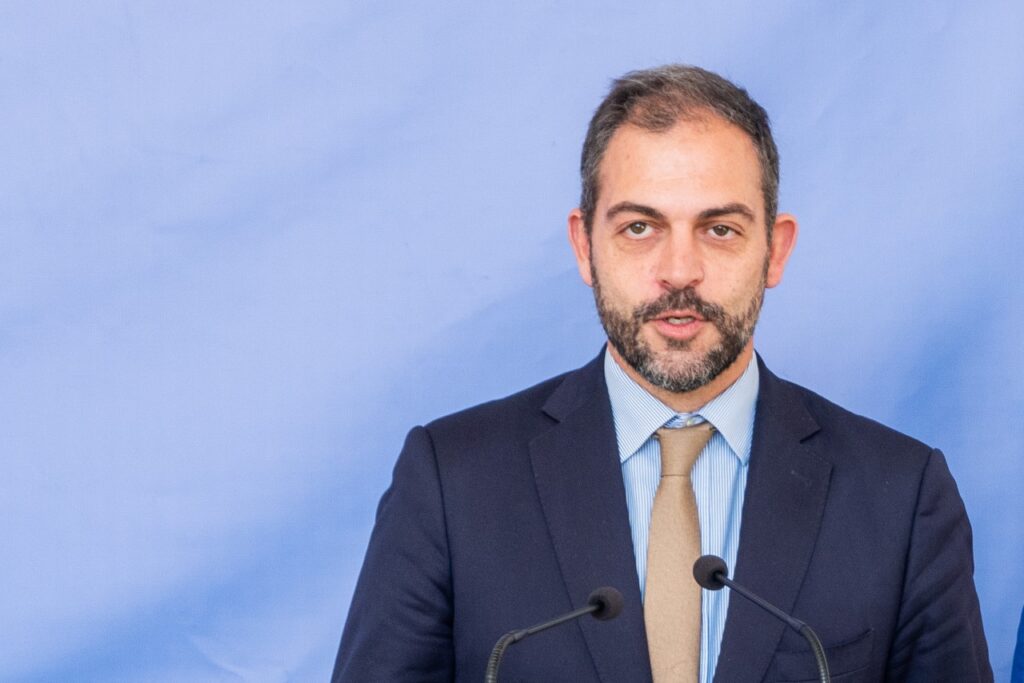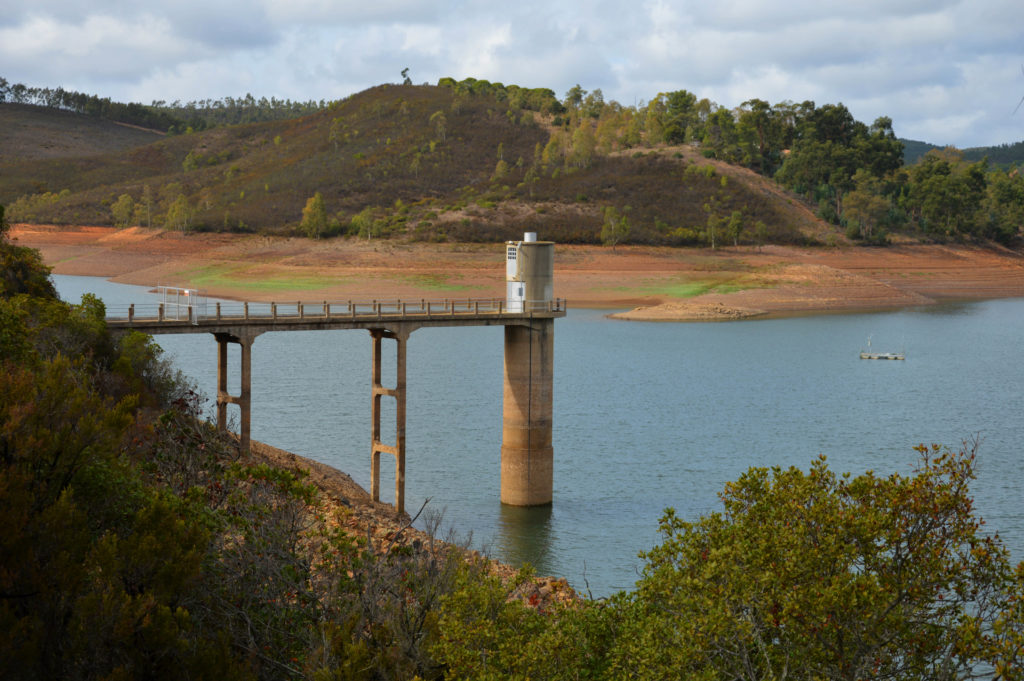It is «one of our least resilient systems» and one of the three dams in the country in a state considered critical, having less than 20% of its volume stored. To address this shortage, the Ministry of Agriculture is promoting a pioneering project, which will make it possible to increase the availability of the Bravura Dam, in Lagos, with treated wastewater.
The news was announced last week, during a visit by Maria do Céu Albuquerque and Duarte Cordeiro, ministers of Agriculture and the Environment, to Block II of the hydro-agricultural development of Silves, Lagoa and Portimão, within the scope of the “Government + Next” initiative. .
«The project I mentioned here has to do with Bravura. This is one of our least resilient systems. Incidentally, during the 2022 drought, we had to carry out several interventions to recover 1,5 cubic hectometers (hm3) of availability», he explained to Sul Informação the ruler.
Since there is an «awareness that we need to increase the availability of water, to meet the needs of our farmers», the Government will proceed with a «pioneering» initiative.
«At the Bravura Dam, we will combine surface water with treated wastewater and, eventually, with reinforcement with deep water, if necessary», he revealed.
«We are talking about treated wastewater coming from wherever Águas do Algarve is available to supply it, so that we can carry out this sustainable development of our agriculture. The project will advance within the scope of the Recovery and Resilience Plan (PRR), so it will be completed by the end of 2026», concluded the Minister of Agriculture.

This project intends to alleviate the chronic low water availability of this reservoir, which, according to the most recent data from the Bulletin of Storage in the Reservoirs of Mainland Portugal, is currently at 13% of its total capacity.
Although, in the other dams of the Barlavento Algarvio, the situation is not reassuring, Bravura has been in a critical condition for a long time.
And not even the December rains significantly changed the situation, despite not being very far away, at the Odelouca Dam (Monchique and Silves), which has the highest storage capacity in the Algarve region (157,14 hm3), the rainfall of the last month of 2022 allowed, in just one month, to accumulate another 10 hm3 in this reservoir.
Despite this being a significant volume of water, Odelouca currently has 39% of its total capacity, which places it in a second level of dams whose situation is not the best, those with a volume between 21% and 40 %.
The Arade Dam, in the same hydrographic basin, is also on this level, with 27% of its total capacity stored.
The Funcho Dam, the third reservoir in the Arade basin, has a storage volume of 57%.
Apart from this last reservoir, which had a slight negative change last week (-1%), Bravura, Odelouca and Arade maintain roughly the same stored volume.
In the Sotavento Algarve, both Odeleite and Beliche have more than half of the water they can store, more precisely 58% and 51%.
These are the values recorded on the 6th of March, a few days before the Instituto Português do Mar e da Atmosfera published its climate bulletin for February, indicating that this it was an "extremely dry" month.
This document reports on the return of moderate drought to Baixo Guadiana, more precisely to the municipalities of Alcoutim, Castro Marim and Vila Real de Santo António, but also to Baixo Alentejo.
At the end of January, there was no part of the national territory in moderate drought, although the entire Alentejo and Algarve were in mild drought.

On the day that Maria do Céu Albuquerque announced the pioneering project, her government colleague Duarte Cordeiro took stock of another ongoing process, which aims to increase the Algarve's resilience to drought: the reuse of treated wastewater for irrigation of green spaces, street cleaning and, eventually, for agriculture.
«Right now, we estimate that we have more or less two cubic hectometers for golf course irrigation. We want to reach 8 hm3, at the end of the PRR », he told the Sul Informação the Minister for the Environment.
“Let's start here. For the reuse of treated wastewater for irrigation of golf courses, watering gardens or washing streets, we removed the need for licensing. There was a simplification here. For agriculture, a licensing process is still necessary, but there is availability on the part of the Ministry of Agriculture and the Ministry of the Environment to work together, in order to use treated wastewater for irrigation, in a mixed form or in treatment processes» , he added.
In other words, there is, «immediately», the objective of using this treated wastewater «to irrigate golf courses, but in the long term we also want to use it for agriculture», concluded the Minister of the Environment.



















Comments